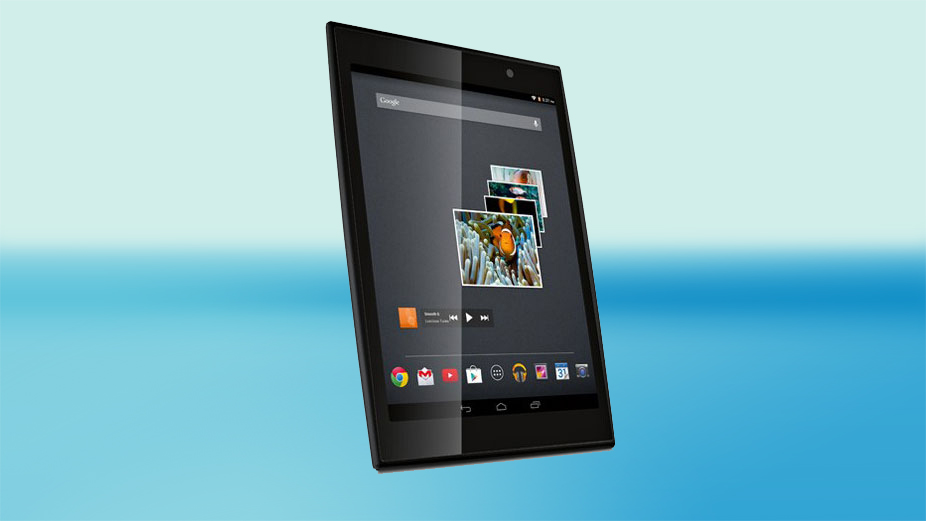Why you can trust TechRadar
Sticking with the outside for now, let's talk inputs and outputs. Like many other cheap tablets, all the buttons and ports are confined to one edge of the Gigaset QV830 tablet.
On the top left is a volume rocker bar, which is reasonably tactile and shaped to easily distinguish one end of the bar from the other. I just can't help but feel it could have been a little wider.
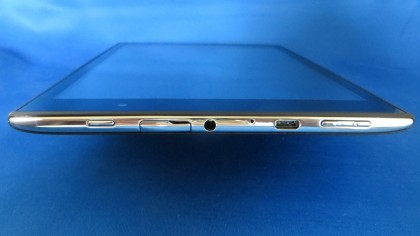
Next to the volume bar is a microUSB connector. It looks a lot more rectangular than most other micro-USB sockets, as does the corresponding USB charging cable, but don't let that fool you, it still accepts normal micro-USB cables for syncing with a PC.
There's a small microphone, meaning you can make use of Google's voice search, Hangouts or even taking audio notes, and right alongside it is a 3.5mm socket for audio output.
Finally there's a microSD card slot, hidden underneath an easy-to-access port cover, which provides much needed additional storage space over the inbuilt 8GB of memory.
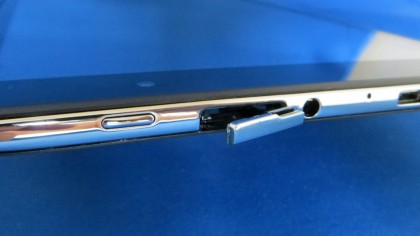
On the top edge is the power / wake button, which is, like everything else on this edge of the QV830, finished in chrome. It suffers from the same diminutive problem as the volume bar, but it does at least provide a reassuring and responsive click.
Internally, specifications are quite reminiscent of an early 2013 tablet, which, at this low price, should come as no great surprise. Wi-Fi is more than adequate, and rated up to N standard. Bluetooth and GPS are also onboard, two features that are often omitted from other budget tablets such as the thoroughly mediocre Zoostorm Playtab Q6010.
There are still things missing, however. Don't expect any 3G capabilities, video output, NFC or IR blaster. Those features have been left out in a bid to keep the cost down. None of those features will necessarily be a deal-breaker for casual users, but they're things you might miss if you have used a top-end tablet such as the Samsung Galaxy Tab S.
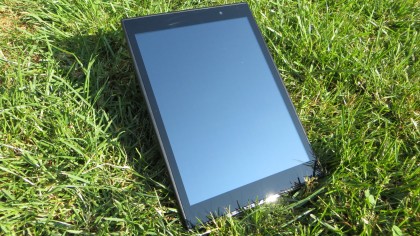
The screen is clearly one of the most important considerations for any prospective tablet buyer, and is one of the main specifications that differentiates those such as the better-than-full-HD Samsung Galaxy Tab 8.4.
The Gigaset QV830 settles with a modest 8-inch 4:3 aspect 1024 x 768 IPS display, which was an adequate resolution around the launch of the original iPad Mini, but is no longer particularly impressive next to so many high-res rivals.
When you're viewing videos or photos, there's generally few complaints to have about the display, however, when you are viewing web pages and text the 160ppi display starts to make everything look considerably more pixelated.
Colour and contrast are both reasonably good, it doesn't look over saturated and performs well at wide viewing angles. Of course, it isn't quite up there with the AMOLED screens of the Samsung Galaxy range, or the Bravia tuned Sony Xperia Z2 Tablet, but when put alongside the kind of budget tablets you'll find on eBay it holds up remarkably well.
Beyond the low resolution, the major downside to the screen is the rather reflective layer of glass that protects it. Not only is it devoid of any kind of anti-glare coating, but the QV830 also lacks an ambient light sensor, meaning you'll need to dive into the pull-down settings pane to adjust the brightness manually.
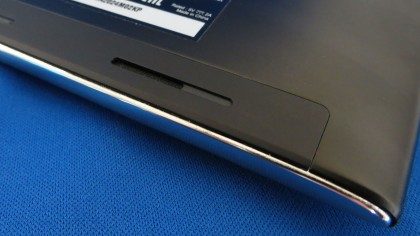
Moving onto the audio credentials the limitations of the tablet's price point become a little clearer. There's a single speaker on the rear, which is relatively loud but, especially at higher volumes, is almost unbearably tinny. Watching a film trailer on YouTube made me wince at certain points, leading me to turn the volume down to about 50%.
Playing music through the speaker on the QV830 is a bit of a joke, but at least you can connect up a set of headphones or pair it with a wireless Bluetooth speaker. One thing's for sure - you won't miss any audio notifications through the external speaker.
Performance
It's very easy to emblazon 'quad core CPU' on a tablet's packaging in a bid to reassure prospective buyers of the performance on tap, but the reality isn't that straight forward. The Gigaset QV830 has a 1.2GHz Mediatek chip and 1GB of RAM which, on paper, should be plenty for most casual users.
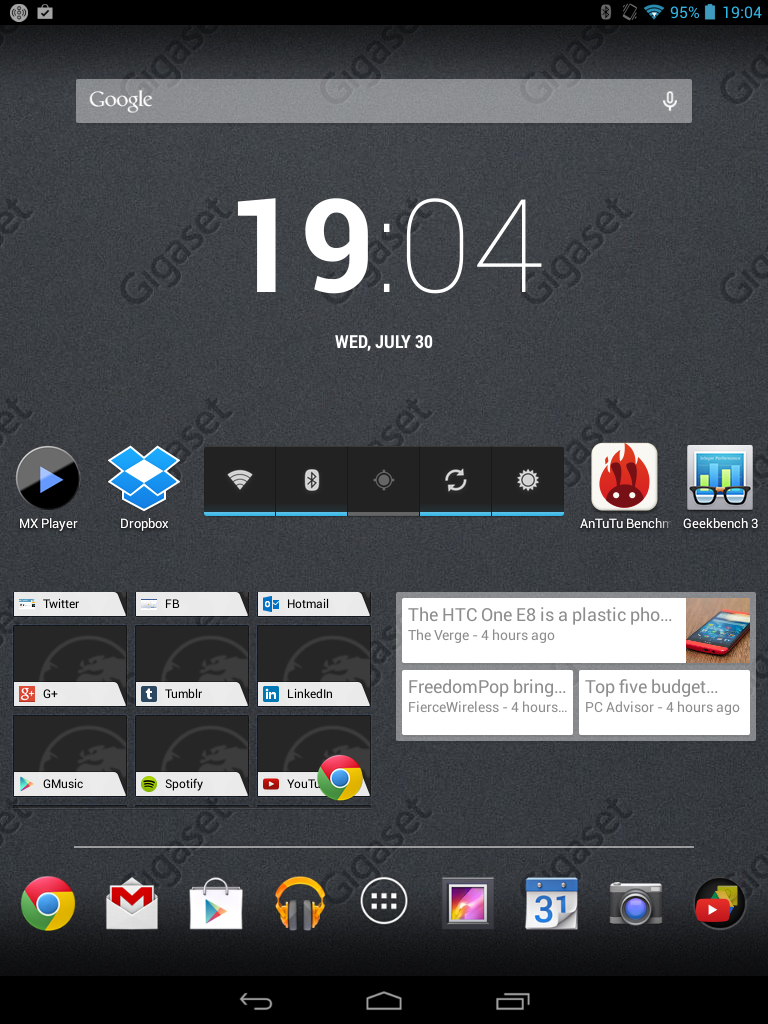
Day-to-day usage of the QV830 is not entirely what I would have expected from a quad-core processor in 2014. Without killing background apps, there's noticeable lag when you pull up the app drawer.
If you leave more than a handful of apps running in the background there's hesitation when switching between screens, which can be a little frustrating.
Newer games were sometimes a little choppy, and others were forced to cut out fancy visual effects in order to play smoothly. This is undoubtedly down to the rather lacklustre PowerVR SGX544 graphics-processing unit, which is slower than the original 2012 Nexus 7, never mind the current Nexus 7.
If you're sticking firmly in the realms of basic web browsing, watching YouTube videos or other basic tasks, then it's unlikely that you'll tax the QV830 to the level where its lack of grunt is especially obvious.
The unaltered Android Jelly Bean 4.2.2 operating system no doubt helps the overall user experience, and is a breath of fresh air alongside some of the heavily skinned versions of Google's operating system out there (Samsung I'm thinking of you here).
Comparing appreciable performance differences from one device to another can be difficult when simply using the tablet. To gain a better understanding of how the Gigaset QV830 compares I ran a few benchmarks.
Antutu Benchmark was my first stop, which compares the full gamut of processing, graphical, and memory benchmarks. The QV830 came in with a score of 13517, which puts it slightly higher than the original Nexus 7, but miles away from the Advent Vega Tegra Note 7.
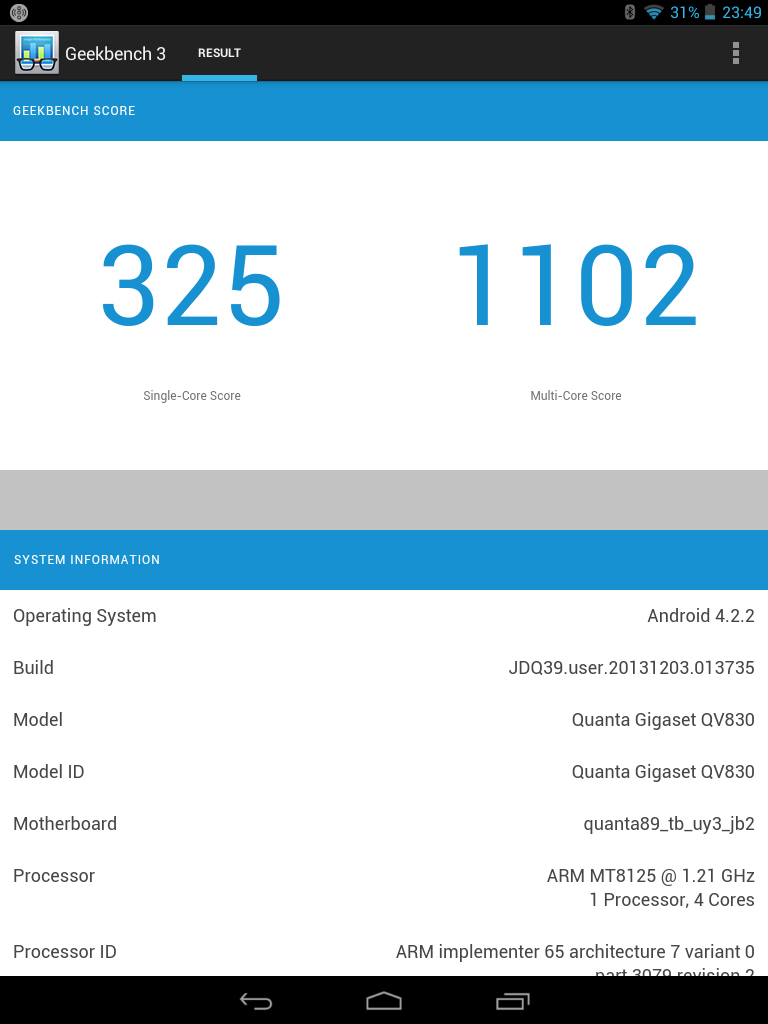
Geekbench 3 is designed specifically to stress the tablet's CPU. It threw up a score of 325 in the single-core test, and 1102 in the multi-core test, which puts it at the lower rungs of the benchmarking ladder.
Finally, I ran a couple of browser-based tests using Chrome. Sun Spider tests java performance, and came out with an average score of 1537, three times slower than the speedy Advent Vega Tegra Note 7.
Futuremark's Peacekeeper tests a wider range of web technologies such as HTML 5 across all browsers, from mobile to desktop PC. The QV830 was again scored an unsurprisingly average score of 563, only slightly more than the original iPad Mini.
Current page: Key features and performance
Prev Page Introduction Next Page Battery life, the essentials and camera